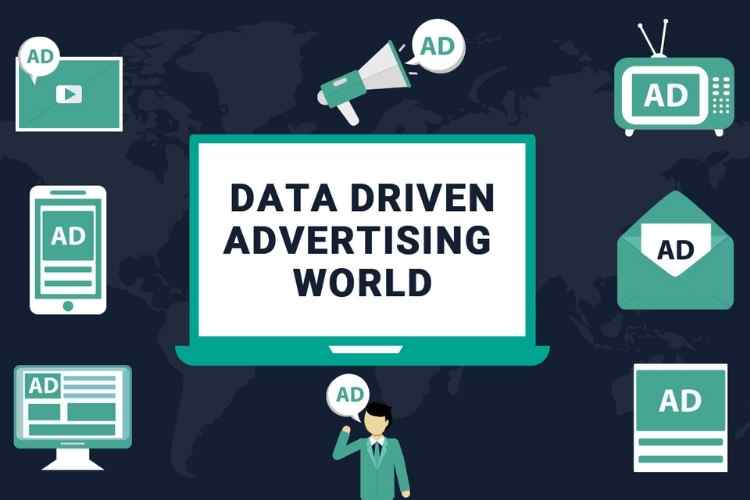The time has arrived to say goodbye to cookies and say hi to context. The scenario of digital advertising is evolving rapidly, and now advertisers are hustling to keep up with this contextual game. Here’s everything you should know about contextual advertising, how it works, and how you can leverage this extraordinary advertising technique.
What is Cookie-based Advertising?
Whenever you surf from one website to another, your browser provides a third-party cookie that helps decide which ads to be shown to you. Many of us know that your IP address tells these sites your location, while cookies tell them about your past browsing activities. That’s how various websites and adtech platforms work together to create cookie-based ads.
For a long time now, digital ads have relied on these cookies. Don’t know exactly who decided to name them after delicious baked goods, but in the world of the web, cookies are the small bits of data that track your personal information and provide it to the advertisers.
Why Are Cookie-based Ads Disappearing?
Let’s face it, users have had enough. A lot of people are opting to block ads more often to protect themselves from becoming a target for programmatic ads. With no way to gather data on their online content consumption behavior, it becomes nearly impossible for marketers to serve even normal cookie-based ads.
Additionally, Google has announced that it will put a ban on all third-party cookies by 2023. Therefore, cookie ads may soon become obsolete. So the advertisers are now shifting to contextual targeting.
The Concept of Contextual Targeting Solutions
These upcoming trends will force advertisers to find new ways of targeting users and displaying ads based on context. Advertisers are adapting to this new online marketing reality by shifting to a more personalized form of advertising—contextual advertising
The strategy of contextual targeting isn’t new—in fact, it has been in the industry for decades. In simpler words, contextual targeting solutions are a way for the firm to advertise their brands online by enjoying the benefit of relevant content on a given site. Nowadays, digital content is everywhere. With contextual targeting, advertisers can serve their ads to people more likely to be interested in that specific content.
Let’s understand this with the help of an example: suppose you are a brand endeavoring to sell headphones, you may target ads that have music content in it. So that your target audience watches your ad when they are seeing a video related music and sound quality.
How Contextual Targeting Works?
To create an impactful contextual targeting campaign, marketers need to determine what the campaign is about and then they will have to align their ad with relevant content accordingly. Earlier this was done via topic and keyword targeting. But, as mentioned before, contextual targeting has worked on advancing the technology to enhance the way in which adtech platforms analyze the content.
Today’s artificial intelligence-driven contextual targeting solutions go above and beyond keywords and topics to understand the whole content and tone of the page in a better way via semantic targeting. With this technology, all factors of the site are taken into consideration, including:
- The tone and sentiment of the page
- Necessary brand safety and suitability concerns
- The quality of the page
- Multilingual content
- Trending and viral content
- Videos content on the page
- Ad fraud possibility
- Image content on the page
This advanced AI-powered contextual targeting solutions analyze every site’s content properly to comprehend the meaning and guarantee the best possible ad placement for brands trying to create an extraordinary curated experience for users.
With the new AI-driven technology, advertisers can decide how restrictive they want to be with their ads. Starting from only displaying ads on specific sites to extending the reach of their content, advertisers can choose different styles of contextual purchasings, including:
- Wide Reach: Previously, this type of ad package didn’t need your keyword to be used on the site but fell within your niche list. This is a lenient form of contextual advertising, so there is some inherent risk.
- Targeted Reach: Earlier, this would imply only displaying ads on sites where your keyword list was utilized. This was somewhere a strict but not too restrictive option.
- Webpage lists: You give a list of pages that you would like your ad to put on when the context is relevant.
Conclusion:
With more rules being imposed worldwide and firms like Apple and Google focusing on the privacy laws, marketers will soon be forced to stop using cookies and behavioral targeting. Contextual targeting solutions provide a great opportunity for marketers to engage with their target audience in a whole different way because it is more acceptable for users and effective for brands.
A cookie-less future is coming soon – so advertisers should also welcome it with all open hearts. Developing a game-changing plan for your brand will ensure you meet your firm goals. Contextual targeting solutions should be a major part of that strategy.
